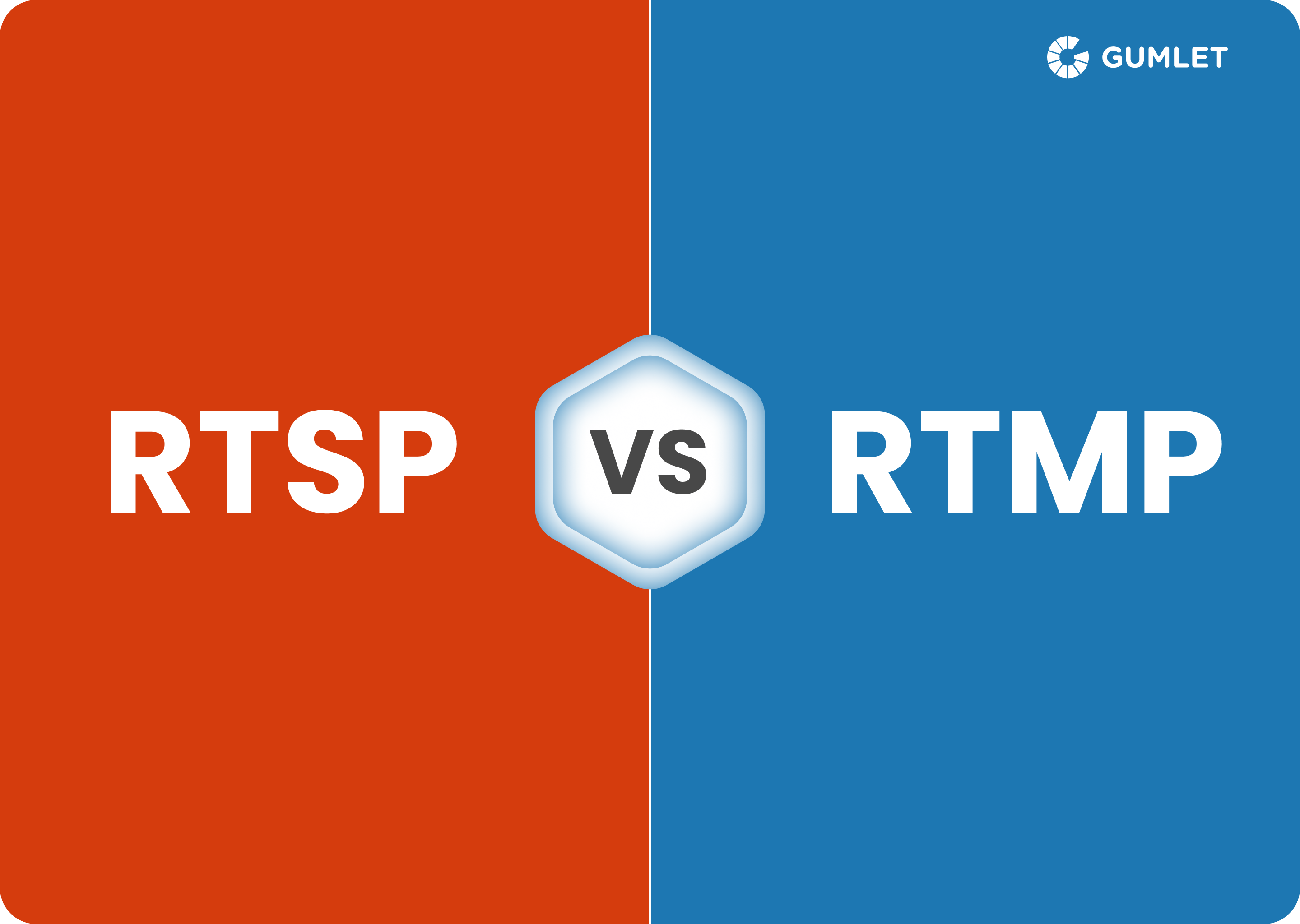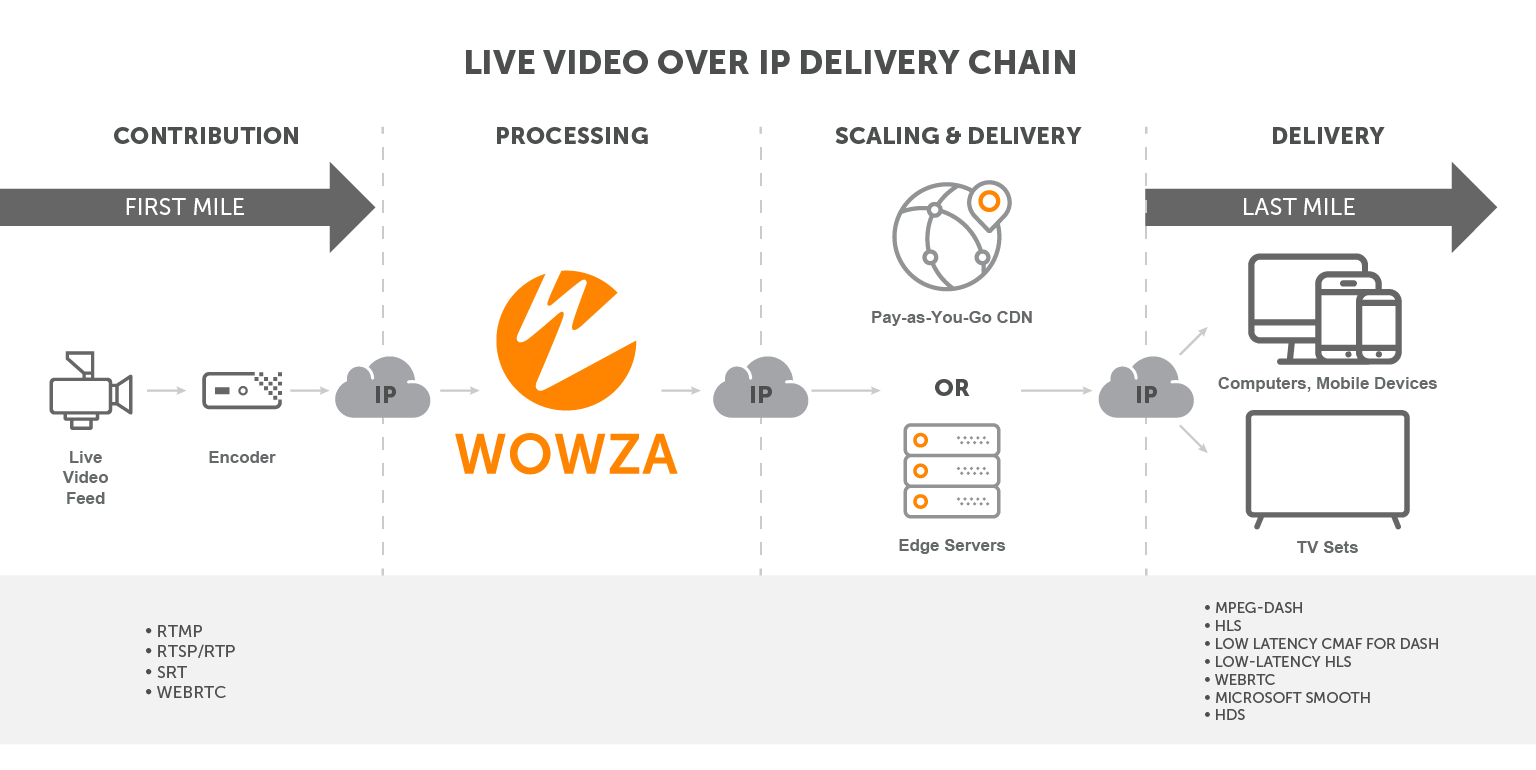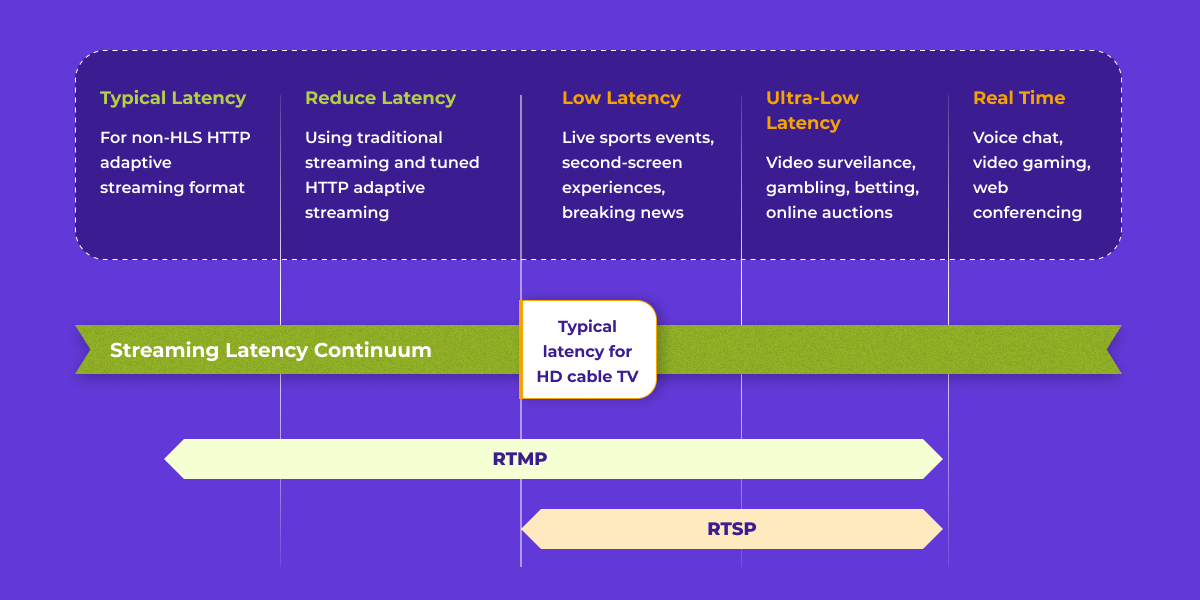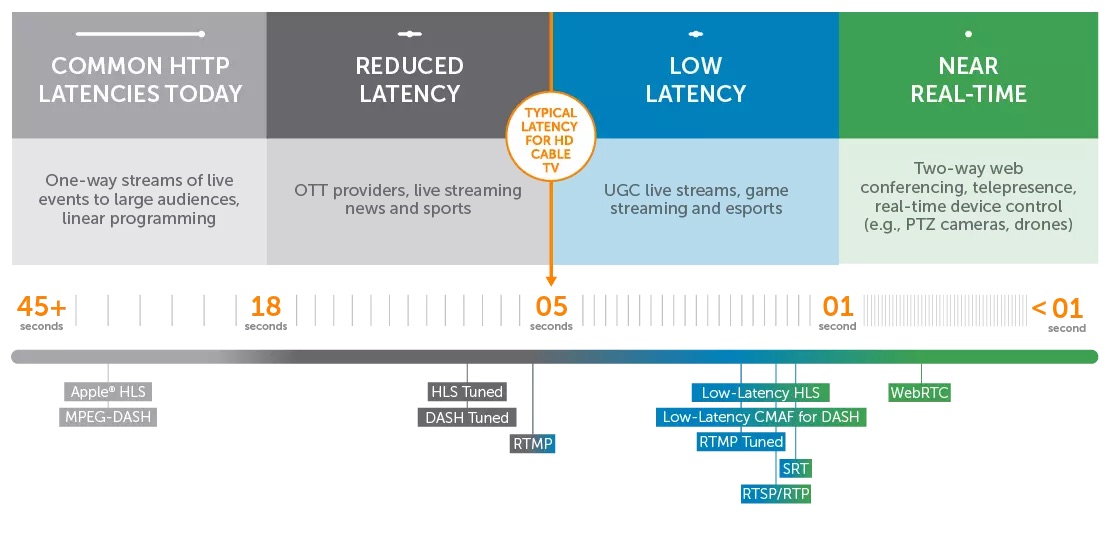RTSP and RTMP are two popular streaming protocols. RTSP is ideal for real-time streaming, while RTMP excels in low-latency environments.
RTSP (Real-Time Streaming Protocol) and RTMP (Real-Time Messaging Protocol) are essential for streaming media over the internet. RTSP, developed by RealNetworks, is widely used for real-time streaming and is compatible with various media players. RTMP, created by Adobe, is favored for its low-latency capabilities, making it suitable for live broadcasts and interactive applications.
Both protocols have unique strengths and applications, contributing significantly to the streaming industry. Choosing between RTSP and RTMP depends on specific requirements like latency, compatibility, and use cases. Understanding these protocols can help optimize streaming performance and enhance user experience.

Introduction To Streaming Protocols
Streaming protocols enable the real-time transmission of audio and video over the internet. They ensure smooth and continuous delivery of content to users. Two popular streaming protocols are RTSP and RTMP.
Importance Of Streaming Protocols
Streaming protocols play a vital role in delivering content efficiently. They help in reducing latency and buffering, ensuring a seamless user experience. Proper use of streaming protocols can enhance the quality of live broadcasts and on-demand videos. Below is a comparison of their significance.
| Feature | RTSP | RTMP |
|---|---|---|
| Latency | Low | Medium |
| Compatibility | IP Cameras | Flash Players |
| Use Case | Surveillance | Live Streaming |
Rtsp And Rtmp Overview
RTSP (Real-Time Streaming Protocol) is used for controlling multimedia streaming. It works well with IP cameras and surveillance systems. RTSP allows for low-latency streaming, making it ideal for real-time applications.
RTMP (Real-Time Messaging Protocol) is designed for live streaming. It is widely used with Flash players and streaming servers. RTMP offers a good balance between latency and video quality. It is popular for live broadcasts and online gaming.
- RTSP is used in security and monitoring.
- RTMP is used in live video streaming.
- RTSP offers low-latency streaming.
- RTMP provides a balance between latency and quality.
Both protocols have unique benefits. Choosing the right one depends on your specific needs.

What Is Rtsp?
RTSP stands for Real-Time Streaming Protocol. It is a network protocol designed to control streaming media servers. This protocol is used to establish and control media sessions between endpoints. RTSP is used for media streaming, such as video and audio.
Rtsp Basics
RTSP works over both TCP and UDP. It is similar to HTTP, but it is designed for controlling media streams. RTSP allows clients to remotely control a streaming media server. This includes commands like “play,” “pause,” and “stop.”
The protocol uses commands to manage the media sessions. Some common RTSP commands include:
- SETUP: Initializes the media session.
- PLAY: Starts the media stream.
- PAUSE: Pauses the media stream.
- TEARDOWN: Ends the media session.
Common Uses Of Rtsp
RTSP is widely used in various applications. Some common uses include:
- IP Cameras: Many surveillance systems use RTSP for live video streaming.
- Media Servers: RTSP is used to control and stream media on servers.
- Live Streaming: It is often used for live broadcasts over the internet.
- Video Conferencing: RTSP helps in managing video and audio streams in calls.
RTSP is versatile and supports various streaming needs. It is a robust choice for real-time media streaming.
What Is Rtmp?
RTMP stands for Real-Time Messaging Protocol. It is a protocol for streaming audio, video, and data over the internet. Developed by Macromedia, it was later acquired by Adobe. RTMP is widely used for live streaming and on-demand video delivery.
Rtmp Basics
RTMP is a TCP-based protocol. It maintains a persistent connection and allows low-latency communication. This is crucial for live streams. RTMP splits streams into smaller chunks. Each chunk is 64 bytes. This makes it easier to transmit and reduces buffering.
RTMP uses a handshake process to establish a connection. It then opens a persistent connection. This connection can handle multiple data streams. RTMP supports video, audio, and text data. It also supports interactive data like chat messages.
Common Uses Of Rtmp
RTMP is popular in live streaming. Many platforms like YouTube and Facebook Live support RTMP. It is also used for on-demand video streaming. This includes services like Hulu and Netflix.
RTMP is also used in web conferencing. Tools like Zoom and Skype use RTMP for real-time communication. It supports low-latency data transfer, which is crucial for video calls.
RTMP is often used in gaming. Platforms like Twitch use RTMP for live game streaming. It allows for real-time interaction between streamers and viewers.
| Use Case | Description |
|---|---|
| Live Streaming | Used by platforms like YouTube and Facebook Live |
| On-Demand Video | Used by services like Hulu and Netflix |
| Web Conferencing | Used by tools like Zoom and Skype |
| Gaming | Used by platforms like Twitch for live game streaming |
Performance Comparison
Comparing RTSP and RTMP is crucial for understanding their strengths. Performance is a key factor. This section will break down latency differences and bandwidth requirements for each protocol.
Latency Differences
Latency is the delay before data starts transferring. RTSP often has lower latency. This makes it ideal for real-time applications. RTMP generally has higher latency. It is better suited for streaming pre-recorded content.
Here is a quick comparison:
| Protocol | Average Latency |
|---|---|
| RTSP | 1-2 seconds |
| RTMP | 2-5 seconds |
Bandwidth Requirements
Bandwidth affects the quality and speed of streaming. RTSP uses less bandwidth. This makes it suitable for low-bandwidth environments.
RTMP requires more bandwidth. It provides higher quality streams. Here is a bandwidth comparison:
| Protocol | Average Bandwidth |
|---|---|
| RTSP | 1-2 Mbps |
| RTMP | 3-5 Mbps |
Understanding these differences helps in choosing the right protocol. Make sure to consider latency and bandwidth requirements for your project.
Compatibility And Integration
Understanding Compatibility and Integration is essential when choosing between RTSP and RTMP. Both protocols have unique advantages. Let’s explore how they integrate with devices and streaming platforms.
Device Compatibility
RTSP and RTMP differ in device support. RTSP is commonly used in IP cameras and surveillance systems. It works well with many network devices.
RTMP, on the other hand, is widely used in live streaming. It’s compatible with many streaming devices and software. This includes encoders and media servers.
Integration With Streaming Platforms
RTMP excels in integrating with popular streaming platforms. It works seamlessly with platforms like YouTube, Facebook Live, and Twitch. This makes it ideal for live broadcasting.
RTSP is less common in mainstream platforms. It’s often used in enterprise solutions. This includes video conferencing and security systems.
Table of Key Differences:
| Feature | RTSP | RTMP |
|---|---|---|
| Device Compatibility | IP Cameras, Surveillance Systems | Streaming Devices, Software Encoders |
| Streaming Platforms | Enterprise Solutions | YouTube, Facebook Live, Twitch |
Both protocols have their strengths. Understanding your needs will help you choose the right one.

Security Features
Security is a crucial aspect when choosing a streaming protocol. Both RTSP and RTMP have distinct security features. This section explores the security capabilities of each protocol.
Rtsp Security
RTSP, or Real-Time Streaming Protocol, offers several security features. These features ensure safe and reliable streaming:
- Authentication: RTSP supports basic and digest authentication. This helps verify user credentials.
- Encryption: RTSP can use SSL/TLS for encrypted communication. This prevents unauthorized access.
- Firewalls: RTSP can work with firewalls. This ensures secure data transmission.
Rtmp Security
RTMP, or Real-Time Messaging Protocol, also has robust security measures. These features make it a secure option for streaming:
- Encryption: RTMP can use RTMPS, which is RTMP over SSL. This provides encrypted data transfer.
- Token Authentication: RTMP supports token-based authentication. This method helps in protecting streams.
- Access Control: RTMP allows for access control lists (ACLs). This restricts who can access the stream.
| Security Feature | RTSP | RTMP |
|---|---|---|
| Authentication | Basic and Digest | Token-based |
| Encryption | SSL/TLS | RTMPS |
| Access Control | Firewall Support | ACLs |
Use Cases And Applications
RTSP and RTMP are both popular streaming protocols. Each has its unique strengths and use cases. Understanding their applications helps you choose the best one for your needs.
Best For Live Streaming
RTMP (Real-Time Messaging Protocol) excels in live streaming scenarios. It provides low latency, which is crucial for real-time interactions.
- Live Sports: RTMP ensures fans experience the game with minimal delay.
- Webinars: Hosts and participants interact seamlessly in real-time.
- Concerts: Viewers enjoy performances as they happen.
RTMP supports adaptive bitrate streaming. This ensures smooth playback even with varying internet speeds.
Best For Video On Demand
RTSP (Real-Time Streaming Protocol) is ideal for Video on Demand (VoD) services. It allows users to control playback with features like pause and rewind.
- Online Courses: Students can pause and revisit lessons as needed.
- Corporate Training: Employees access training videos at their own pace.
- Movie Streaming: Users enjoy full control over playback.
RTSP supports multiple codecs, providing flexibility in content delivery.
| Feature | RTMP | RTSP |
|---|---|---|
| Latency | Low | Medium |
| Use Case | Live Streaming | Video on Demand |
| Playback Control | Limited | Full |
| Codec Support | Limited | Extensive |
Frequently Asked Questions
What Is Rtsp?
RTSP stands for Real-Time Streaming Protocol. It is used for controlling streaming media servers. It allows clients to control media sessions.
What Is Rtmp?
RTMP stands for Real-Time Messaging Protocol. It is used for delivering audio, video, and data over the internet. It is widely used in live streaming.
How Does Rtsp Differ From Rtmp?
RTSP is mainly for controlling media sessions. RTMP is for delivering media content. RTSP is often used in IP cameras, while RTMP is common in live streaming.
Which Is Better For Live Streaming?
RTMP is generally better for live streaming. It provides lower latency and better performance. RTSP is more suited for surveillance and remote monitoring.
Conclusion
Choosing between RTSP and RTMP depends on your streaming needs. RTSP is great for low-latency, real-time streaming. RTMP excels in delivering high-quality live video to a large audience. Both protocols offer unique advantages. Select the one that best fits your specific requirements and enhance your streaming experience.



